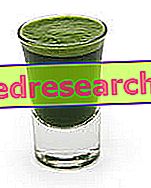Definition
Lice are parasitic insects that feed on the blood of the individuals they infest (the so-called "guests").
There are essentially three species of lice that infest humans:
- Pediculus humanus corporis (or Pediculus humanus humanus, body or clothing louse),
- Pediculus humanus capitis (head or scalp louse)
- the Phthirus pubis (pubic louse, commonly known as a "lizard").
Lice infestations are called " pediculosis ".
Causes
Lice infestation is very common in conditions of poor hygiene and overcrowding. The infection occurs by direct contact (including sexual relations) with people already infested and / or through the mixed use of personal objects (combs, brushes, hats, etc.) belonging to individuals suffering from pediculosis.
Body lice are localized on clothes and transmitted through the use of contaminated clothes and sheets.
The pubic louse is generally transmitted through sexual intercourse, but the infection can also occur indirectly, for example, through hairs left on sheets, clothes, towels or even on the toilet seat. In addition, the pubic louse - in addition to the groin and perianal area - can also infect eyelashes and eyebrows.
The scalp louse, on the other hand, lives on the head localizing itself in the nape area and in the areas behind the ears and on the temples. This type of louse is widespread especially in school-age children.
The most common lice in our country are precisely those of the scalp and pubis.
Symptoms
The lice to feed on the blood of the host sting the skin injecting their saliva. The saliva released by the insect bite causes small skin lesions accompanied by discomfort, irritation and above all an intense, continuous and annoying itching. This pushes the guest to scratch, thus favoring the appearance of scratching lesions. The formation of these lesions can favor the onset of bacterial superinfections which, in turn, can cause folliculitis, furunculosis and skin sores (this phenomenon occurs above all in infestations with body lice).
The symptoms of pediculosis vary according to the type and location of the infestation, but itching and irritation are common to all forms of pediculosis.
Furthermore, clothing louse can be the cause of etiological agents of serious infectious diseases, such as trench fever, recurrent epidemic fever and exanthematous typhus. However, these pathologies are mostly widespread in underdeveloped countries where hygiene conditions are very poor.
Information on Lice - Drugs to Eliminate Lice are not intended to replace the direct relationship between health professional and patient. Always consult your doctor and / or specialist before taking lice - eliminating lice.
drugs
The drugs that are used for the treatment of lice are pesticides and insecticides. These drugs are available in the form of lotions, gels, creams, foams or shampoos to be applied to the area affected by the infestation.
The use of drugs is not sufficient to prevent the onset of new infestations. In fact, it is necessary to wash all clothing, towels and sheets at high temperatures (not less than 60 ° C), using a normal detergent, sodium perborate or products based on pyrethroids.
Head lice combs
In the case of scalp lice, a treatment similar to the one just described must be carried out for brushes and combs, which must be treated with pesticide products and hot water at 60-70 ° C for at least 15 minutes.
Furthermore, for the treatment of head lice, particular combs with very narrow teeth can be used. The comb must be passed through damp hair and is able to remove both eggs and adult lice from the hair.
Also available on the market are electric combs that must be used on dry hair. These combs emit a sound when they meet an adult louse and kill it through a small electric shock (not perceived by the host). In contrast, electric combs are not able to kill eggs (called nits), but only adult specimens.
However, the use of the comb alone is not effective in completely eliminating the infestation, therefore it must be accompanied by adequate therapy with anti-parasitic drugs or insecticides.

Synthetic pyrethroids
Pyrethroids are molecules of synthetic origin with a chemical structure similar to that of pyrethrum, a natural insecticide that is extracted from some plants belonging to the Asteraceae family. These drugs are available in the form of shampoo, skin foam, powder, gel, skin emulsion and lotion.
Among the most used pyrethroids, we find:
- Permethrin (Nix ®, B-Jen ®): permethrin is readily available in different formulations (shampoo, skin emulsion).
When permethrin is used in the form of a skin emulsion, it is recommended to apply it on the scalp and damp hair for about 10 minutes, after which the hair must be thoroughly rinsed and dried. In most cases, just one treatment is sufficient to eliminate lice and eggs.
In addition, permethrin-based sprays are also available that can be used on clothing and fabrics just before washing in the washing machine.
- D-phenothrine (Mediker ap ®, Neo Mom ® shampoo, Mom ® gel): D-phenothrin is also available in different formulations (shampoo and gel). When using D-phenothrine-based shampoo, it is recommended to apply about 30 grams of product on damp hair and to massage and rub the scalp for 3-5 minutes, after which it must be rinsed with care and the operation repeated a second time. Generally, a single treatment is sufficient to end the infestation, but for preventive purposes the treatment can be repeated after a few days.
Furthermore, D-phenothrin is also available in combination with tetramethrin (another synthetic pyrethroid) in the form of shampoo or powder.
- Bioallethrin (Cruzzy ® shampoo, Cruzzy ® lotion): bioallethrin is available in the form of shampoo and lotion. The product must be applied to the hair, left to work for a few minutes and then properly rinsed.
Other Lice Medications
- Malathion (Aftir ®): malathion is a very effective organophosphate insecticide that has low toxicity to humans, which is why it is widely used in the treatment of head lice and pubic lice. It is mostly found in the form of gel or shampoo. When using the gel formulation, it is advisable to apply the product on the hair or on the dry hair with the help of a comb and to leave to act ten minutes. Then you can proceed to rinse and eliminate the eggs and dead insects with the use of a comb with dense teeth.
- Ivermectin : ivermectin is a broad-spectrum antiparasitic drug, used both in humans and in the veterinary field.
For the treatment of lice, ivermectin is available as tablets for oral administration, or as a lotion for cutaneous use which must be applied to dry hair for about ten minutes.
Ivermectin, however, is not a drug of choice for lice treatment. Its use, in fact, must be reserved for the treatment of particularly invasive infestations and / or that do not respond to other treatments.



